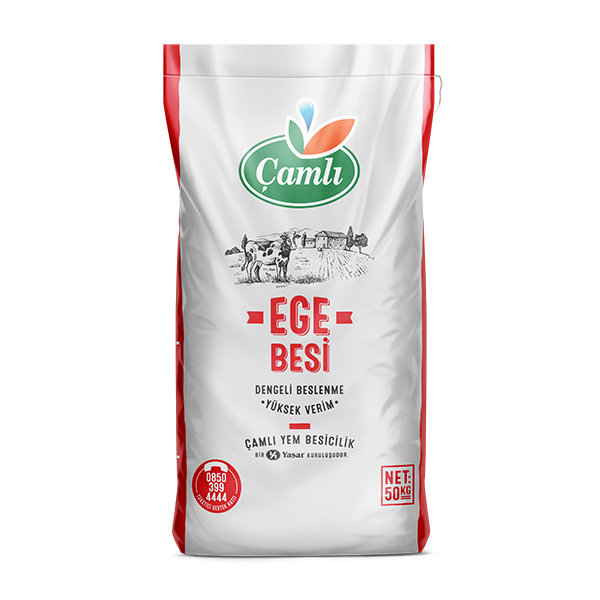Ege Fattening Feed
Ege Fattening Feed is an economical one used during the entire fattening period of beef cattle.
Properties:
- Special buffer materials have been added for the protection against acidosis and bloat cases.
- Thanks to the highly digestible raw materials employed in its content, it has a positive effect on carcass quality and meat yield.
- It is delicious and appetizing.
- It provides rapid development and muscle growth.
- It has a balanced structure in terms of energy, protein, mineral and vitamin contents.
Important Information:
- In the planning of housings for livestock, the dry bedding area per cattle should be at least 1 m2 per 100 kg live weight. It would also be good if the exercise area is once or twice the area of the same.
- It is very important for our livestock to be provided with at least 25 cm feeding area in free systems per animal, in order to avoid competition and ensure free access to food.
- It is important to supply 24 hours of clean and potable water to our livestock.
- Our livestock can have an access to the feed for 24 hours.
- It will be proper to provide our livestock with 1 kg of concantrate feed per 100 kg of live weight at the beginning of the feeding. such an amount can be calculated as 1 kg per 50 kg of live weight at most at the end of nutrition.
- We must house our livestock animals in paddocks, which are not too crowded, in such a manner that they are at as close ages and live weight as possible. We should not change the paddocks of our animals unless necessary.
- We must provide quarantine paddocks for our livestock. We must develop our necessary preventive vaccination and treatment programs.
- We should not buy animals from those having developmental retardation, depression breathing, intense parasitic infestation or epidemic diseases.
- It is important to control respiratory problems, which have a higher percentage of compulsory slaughter and waste in animal husbandry. Important points to be considered at this point are that the diagnosis of the disease at an early stage in order to response with the most proper treatment protocol and that both fever follow up and clinical examinations must be performed in order to favorably monitor in respect of the success of the treatment process and response to the treatment. In addition to the necessary examination and treatment applications in sick animals, If the prognosis is not good, cut decision on slaughtering them should be made before too much live weight loss occurs.
- Vaccination and antibiotic administrations should be fulfilled 3-4 weeks before the date of shipment as far as at the places where animals are procured.


